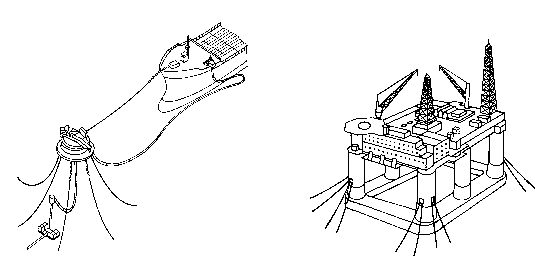
In recent years the exploitation of offshore hydrocarbons takes place in increasingly deep water. Since fixed platforms are restricted to a certain depth, floating platforms are used in great water depths, due to their lower cost for construction. The advantages are transportability and mobility in the oilfield. Furthermore floating systems can be established faster than comparable concrete- or steel platforms. Positioning of the floating body is realized by several mooring systems. This is the reason why moorings belong to the most important structural elements in ocean engineering. Depending on usage and type of construction different moorings are required. A single point mooring for example usually restrains storage buoys, whereas spread mooring systems maintain bigger structures like semi submersibles on station.

Investigating the dynamic behaviour of moored floating bodies is a coupled problem of mooring line and floating structure. Before analyzing the complete structure, an approach to this problem is made by separating it. The floating body is investigated with established standard procedures. A mooring line can be modeled using several approaches. Simpler models use linear springs to simulate the restoring forces due to the mooring line. Force-displacement-tableaus show the restoring force depending on the displacement of the attachment point at the upper end of the line. The interaction between mooring system and fluid, i.e. damping and hydrodynamic coefficients, can be considered using a model that describes the complete geometry and material properties of the line. Possible discretization methods are continuous systems, lumped-mass systems, multi-body systems or finite-element systems. An evaluation of these models is performed to develop an analysis procedure for the coupled problem.
The goal of this research project is to establish an appropriate analysis model for moored floating bodies. This method should allow for the analysis of offshore like production platforms under consideration of the fluid-mooring-interaction. Furthermore comparison with results obtained by other methods and, if applicable, with experiments shall be conducted.